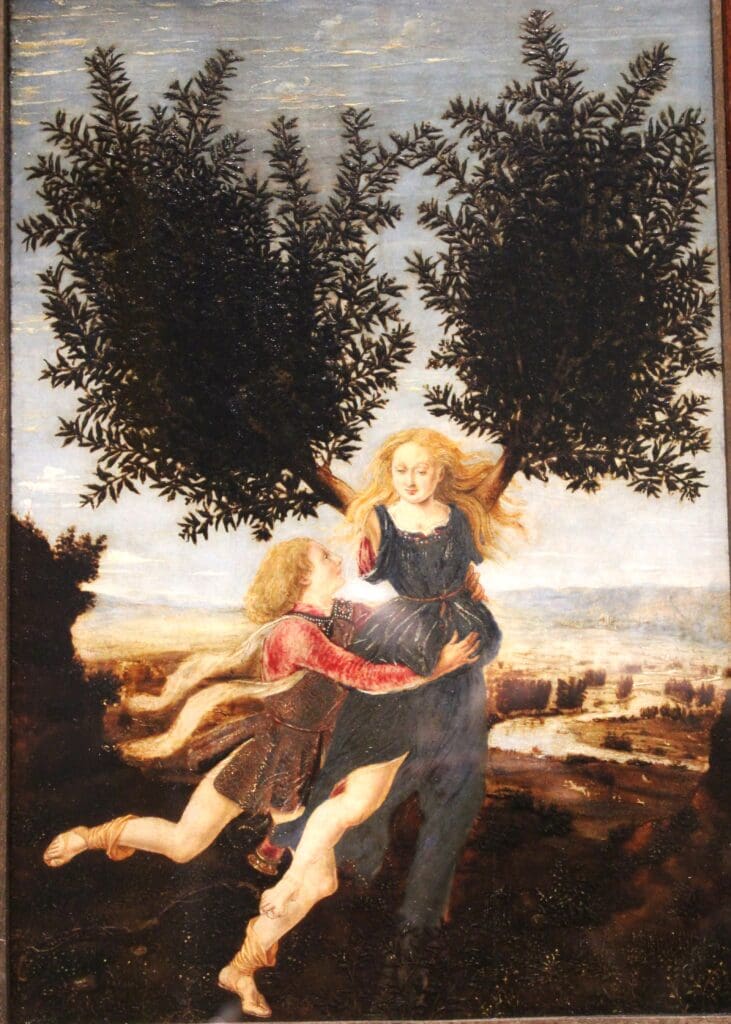
James Brewer reviews a rehang and refit that adds lustre to the unparalleled collection of Western European art
A complete and imaginative redisplay of more than 1,000 of the National Gallery’s glorious possessions – seven centuries of artworks, from Giotto to Monet – has been greeted with delight by the public and by connoisseurs.
New settings for the huge repertoire of masterpieces seems to give them more room to “breathe.” The overhaul has been made possible by the reopening with bold new architecture of the Trafalgar Square institution’s Sainsbury Wing, which becomes the main entrance to the collection, highlighting it to stunning effect. Few others of the world’s greatest galleries vouchsafe such immediate impact; the gilded welcome rendered even more enticing by the continuation of the policy of free entry to everything except selected special exhibitions.
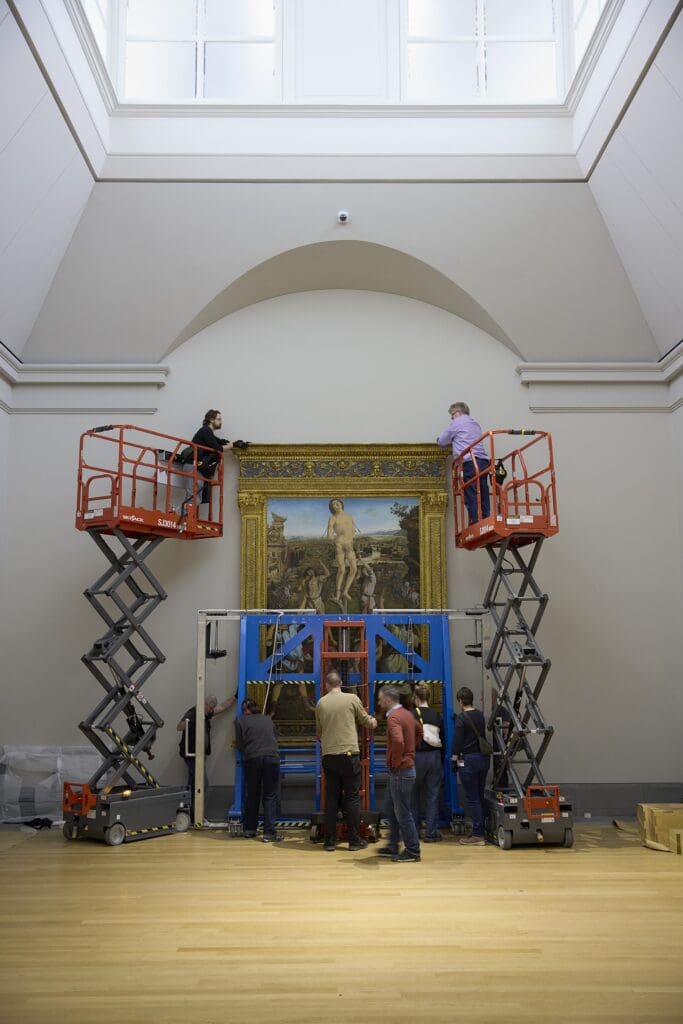
Anyone familiar with the thronged pre-rehang rooms will scarcely imagine what a relaxed and unflustered stroll awaits. Passing through the ambitiously redesigned portals, anyone with a passion for visual art will be thrilled at the spacious and coolly modern layout. It is a pleasure to make one’s way to the poetic unfurling of the priceless displays. Founded by Parliament in 1824, the Gallery houses the UK’s collection of paintings in the Western European tradition from the late 13th to the early 20th century. In this regeneration the curators, designers, and architects have created the measured ambience just right for the absorbing stories, the fantasy conjured up by each classic picture.

Of course, the revamp and the rehang – so much more than a reshuffling of a well-worn deck – has required substantial sums of money, and a series of benefactors have stepped forward. The rehang has been dubbed C C Land: The Wonder of Art, as it is sponsored by Hong Kong-headquartered property development and investment business C C Land, which has projects in the UK, Hong Kong, and Chinese mainland. The list of donors backing the reconfiguration of the building includes the Sainsbury Family through the Headley Trust and the Linbury Trust. Together with the Monument Trust those two bodies funded the establishment of the Sainsbury Wing 35 years earlier.
The Sainsbury Wing reopened in May 2025 after being closed since February 2023 for the redesign of the external façade, foyer and first floor, in a plan designed by New York-based Selldorf Architects, working with heritage architects. On May 6, the King and Queen officially reopened the wing – the King is the National Gallery’s Royal Patron.
Reassuring the traditional- minded fans of the gallery who might have feared modernisers would go “over the top,” the restyling arrays the inheritance beautifully and the wall captions are clear and concise.
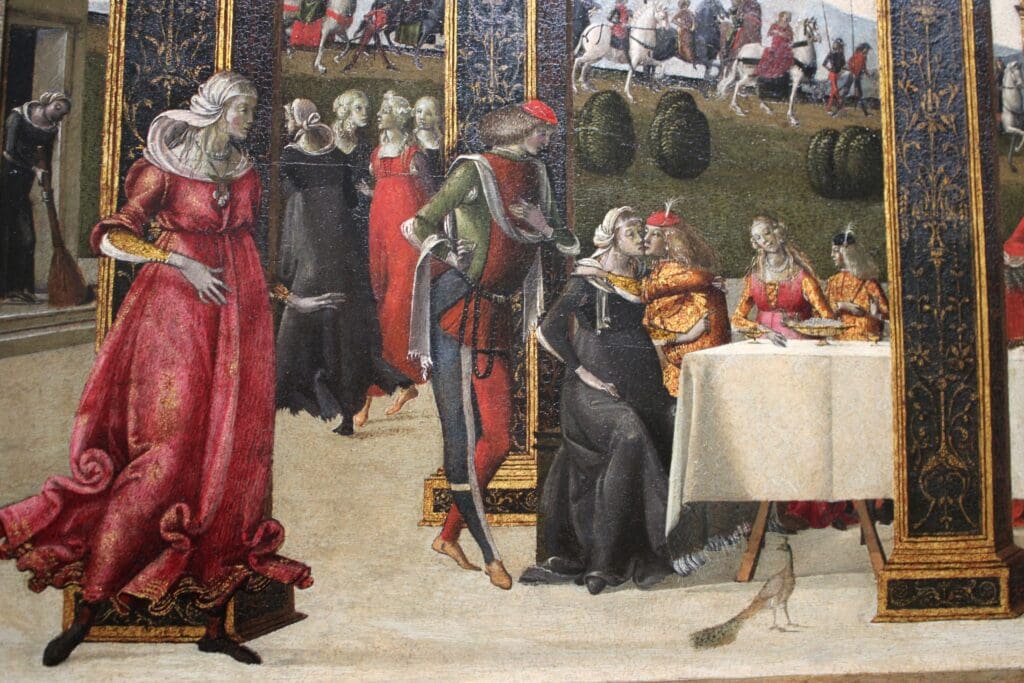
Collectively the National Gallery reaffirms its status as a powerhouse among the world’s leading galleries, but individually in the new format each artwork shines out – so many ‘actors’ treading the stage as part of one unforgettable ‘performance.’ Artworks of modest dimension stand out as proudly as those that command the arena by dint of size as well as cultural import. More than 20 new loans and eight new acquisitions marking the gallery’s bicentenary have joined the collection.
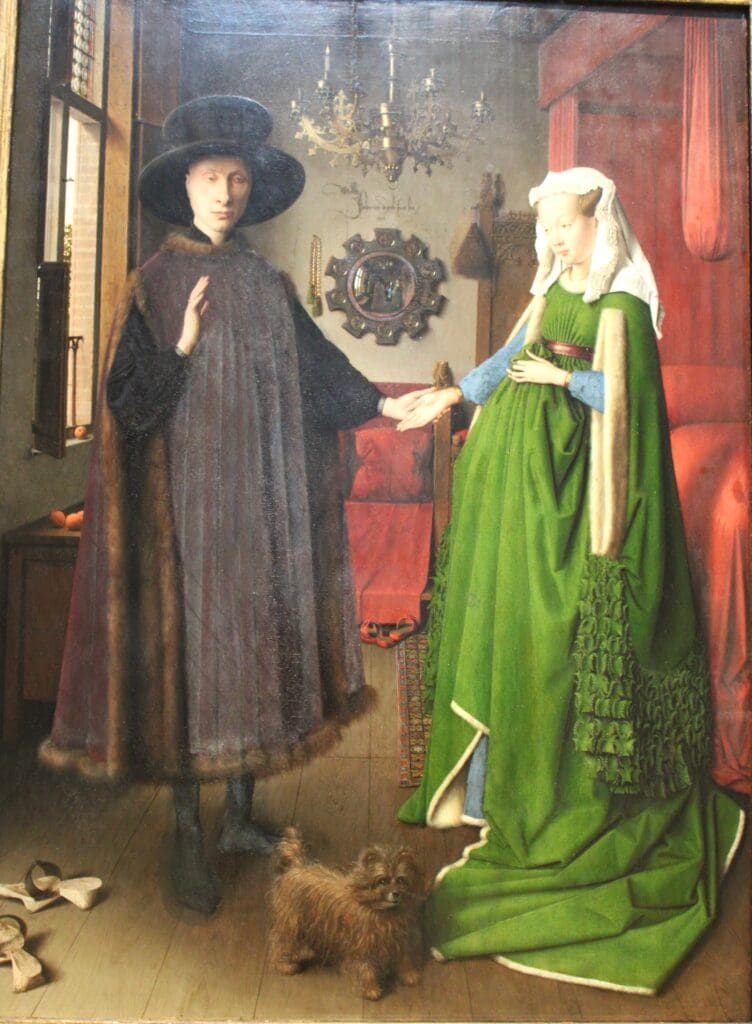
Let us take a stroll through the renovated Sainsbury Wing where works from the medieval and Renaissance periods have returned following the closure. The rehang and refit align with the ecclesiastical overtones of the architecture to emphasise devotional purpose and transmit spiritual mystery and lore of early high art. The aim is to show paintings in a way they would have been encountered by congregations hundreds of years ago. For instance, a specially designed chapel-like space is dedicated to the Baptism of Christ by Piero della Francesca, who lived from about 1415/20 to 1492.
The opening room includes The Wilton Diptych (English or French, about 1395‒9) made for Richard II of England in the last five years of his life and combining religious and secular imagery of his conception of kingship. On the inside the king is presented to the Virgin and Christ Child by England’s patron saints Edmund and Edward the Confessor, and his personal patron John the Baptist. Richard’s emblem of a white hart, or stag, is on the outside, and as badges worn by the host of angels. This diptych was once owned by Charles I.
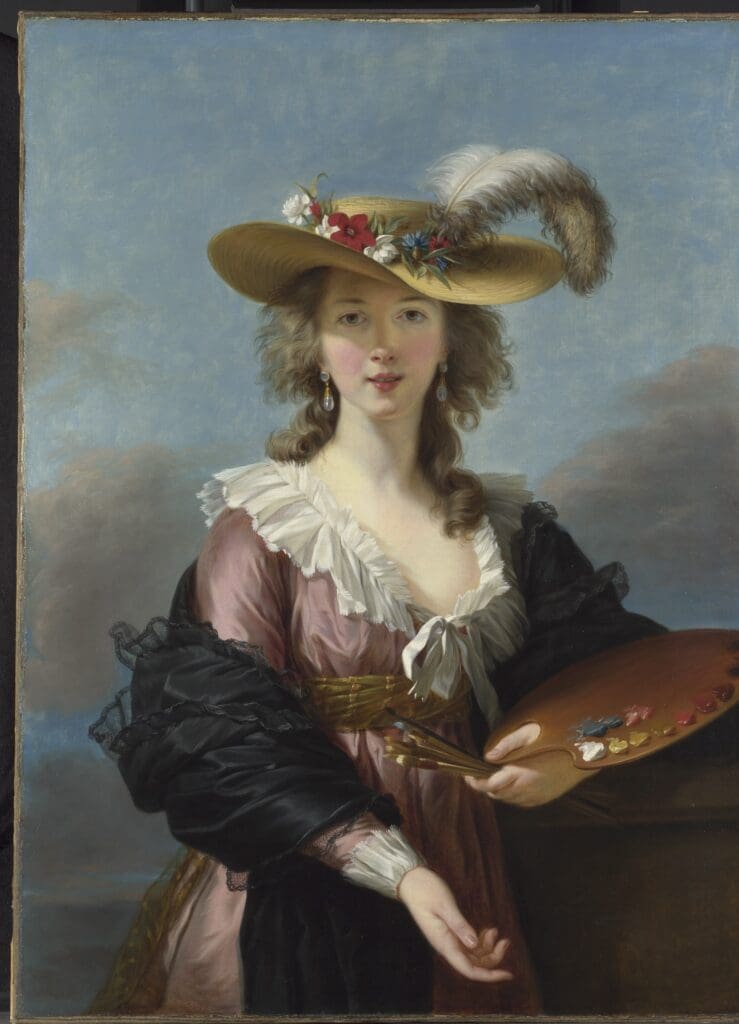
Close by is perhaps an even greater treasure, The Virgin of the Rocks by Leonardo da Vinci. The Virgin Mary with Saint John the Baptist and an angel kneel to adore the infant Christ, who raises his hand to bless them. The gallery’s commentary says that Leonardo’s interest in the natural world is reflected in the other-worldly landscape. The rocks structure the whole painting with their pinnacles, broken surfaces, and fissures. Bright flowers and healthy foliage abound, but the flowers are invented hybrids.
An impressive, newly built frame displays the San Pier Maggiore Altarpiece, painted by Jacopo di Cione and his workshop in 1370-71 for the Benedictine nunnery of San Pier Maggiore, Florence.
The Battle of San Romano (with a cavalry charge during a Florentine victory of 1431), returns after a three-year restoration process. This large work, 182 × 320 cm, is by Paolo Uccello (about 1397 – 1475).
Room 64 bears the title Gold: European Painting 1260–1550. It is one of the new themed rooms, every painting adorned with the colour gold, which in the era reflected the timeless significance of Christ, the Virgin and the saints, and added value to holy objects such as shrines and reliquaries. Here the Mystic Nativity by Sandro Botticelli from 1500, oil on canvas, expresses the relationship between divine figures of the heavens, humans and nature. Botticelli unlocks the prophecy in the Book of Revelation, also known as the Book of the Apocalypse, of the end of the world, Christ’s second coming and the burial of the Devil. Seven demons scuttle through cracks in the rocks to seek shelter in the underworld. A Greek inscription at the top of the picture bemoans “the troubles of Italy”, which were the invasion of the French, who took Naples in 1494 and Milan in 1499, and civil strife in Florence.
In a first for the National Gallery, a Crucifix (about 1310‒15) by Segna di Bonaventura of Siena is suspended from the ceiling, in the way it would have been seen in the 14th century. Such painted crucifixes were features of Italian churches in the thirteenth and fourteenth centuries, and they would have hung high over an altar or the choir.
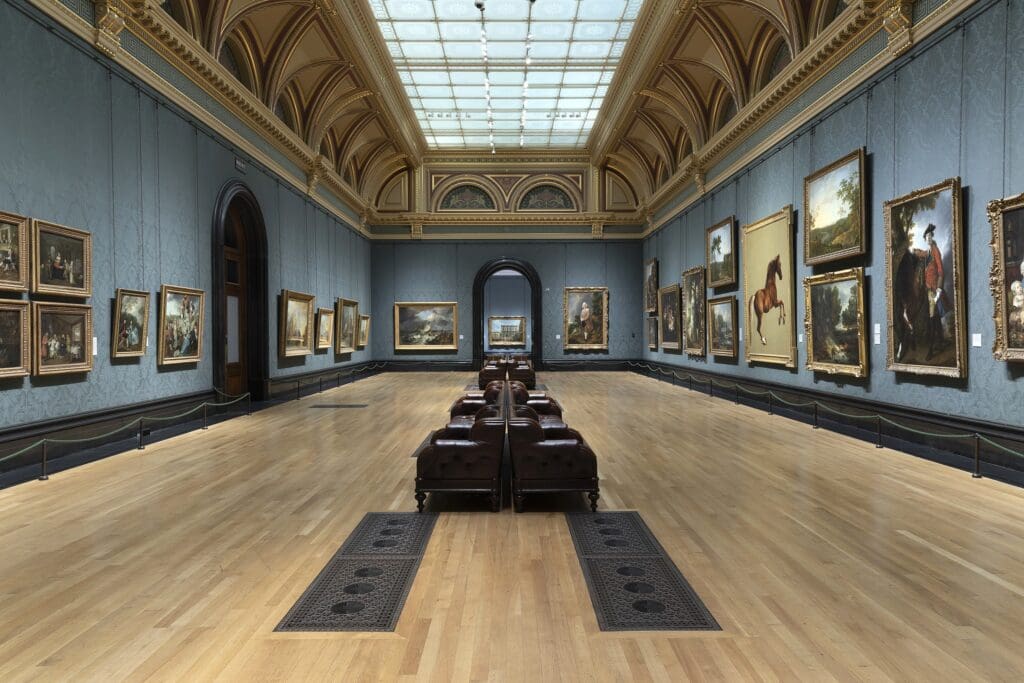
The Martyrdom of Saint Sebastian (completed 1475) by Antonio del Pollaiuolo and his brother Piero has been put back after nearly three years of conservation and scientific study. The altarpiece was painted in the mid-1470s for the substantial chapel of the Pucci family in Florence. The artists used a very large scale, at 291.5 × 202.6 cm, to show their talent for perspective and geometrical structure. At a more manageable scale, Piero pictures a story from the Greek pantheon, about the rivalry of the gods and the power and danger of love: Apollo and Daphne. Ovid recounts in the Metamorphoses how Apollo fell in love with the nymph Daphne. She fled, and just as Apollo caught her, she turned into a laurel tree. Piero set the scene in his native Tuscan countryside. Minute details of flowers are scattered across the hillside and trees are reflected in the river.
An everyday story of male aristocrat chauvinism in the 15th century is exposed in the Medieval equivalent of a strip cartoon: an elaborate triptych by an artist known as the Master of the Story of Griselda. He worked in Umbria around 1490 and probably spent time in Siena. Three extended panels with their elongated figures tell The story of Griselda as in Boccaccio’s Decameron. While on his white horse out hunting, the Marquis Gualtieri di Saluzzo sees a young peasant woman, Griselda, and announces that he will marry her and she must owe him total obedience. He publicly strips Griselda to dress her in gold-woven wedding finery but torments her by pretending to annul their marriage in favour of a different bride, even asking her to arrange the wedding feast; we see her sweeping the floor. Eventually, her loyalty despite her ordeals wins her fame and respect, and the Marquis elevates her to her rightful position – with a cuddle. The three panels were commissioned for a room in the Spanocchi family palace in Siena and were probably made to celebrate two family marriages.
In 1985, the National Gallery bought what it has catalogued as The St Catherine Altarpiece: Reverses of Shutters, dating from 1506. The pictures that were once on the outside of the wings of the altarpiece, which is in the Gemäldegalerie Alte Meister, Dresden, were produced by Lucas Cranach the Elder (1472-1553). The altarpiece was commissioned by Frederick the Wise, Elector of Saxony, for the Castle Church in Wittenberg. The Dresden Gallery auctioned off the outer side of the left wing and the inner sides of both wings in 1797 because Cranach paintings were falling out of fashion. In 1995 German federal and state funds enabled the Gemäldegalerie to purchase it from the heirs of the Speck von Sternburg family, whose art collection originated in the wool merchant Maximilian Speck’s European business travels from 1800.

Unmissable is Jan Van Eyck’s 1434 Arnolfini Portrait which has been with the Gallery since 1842, yet its symbolism remains elusive. The couple are thought to be Giovanni di Nicolao di Arnolfini, an Italian merchant working in Bruges, and his wife. Shown full-length in their bedchamber, surrounded by objects that proclaim their wealth, they greet us as viewers and the visitors reflected in the large mirror on the back wall. Experts say that close examination reveals inconsistencies such as lack of space for the chandelier, and no indication of a fireplace. The mirror reflects two men coming into the room, one of whom it is speculated might be van Eyck himself, with his servant.
Artists with dedicated rooms elsewhere at the Gallery include Titian, Rembrandt, Monet, Peter Paul Rubens, Anthony van Dyck, Thomas Gainsborough and Claude Monet.
There is an intriguing Rubens connection with Self Portrait in a Straw Hat which is a signed copy by the fashionable Parisian portrait painter Elisabeth Louise Vigée Le Brun, of a self-portrait she painted in 1782, and is now in the Collection of the Baronne Edmond de Rothschild. She was the official portrait painter of Marie Antoinette. The pose is modelled on Rubens’s Portrait of Susanna Lunden (?) (also in the National Gallery’s collection), which was formerly, but incorrectly, known as Le Chapeau de Paille (The Straw Hat). Susanna Lunden (1599–1643) was the daughter of the Antwerp merchant Daniel Fourment, an old friend and client of Rubens. The portrait presumed to be of Susanna was probably made soon after her marriage to Arnold Lunden. Rubens was clearly struck by her, and a few years later at the age of 52, he married her youngest sister Hélène, who was 16 at the time.
Claude Monet (1840-1926), the French Impressionist landscape painter, is another huge draw at the Gallery. Monet arrived in September 1870 in London, where he painted five cityscapes including The Thames below Westminster, looking south towards the Houses of Parliament.
Don’t worry about missing other favourites: van Gogh’s beloved Sunflowers and Chair and several landscapes are readily visible, reminders of the recent record-breaking National Gallery exhibition Poets and Lovers.
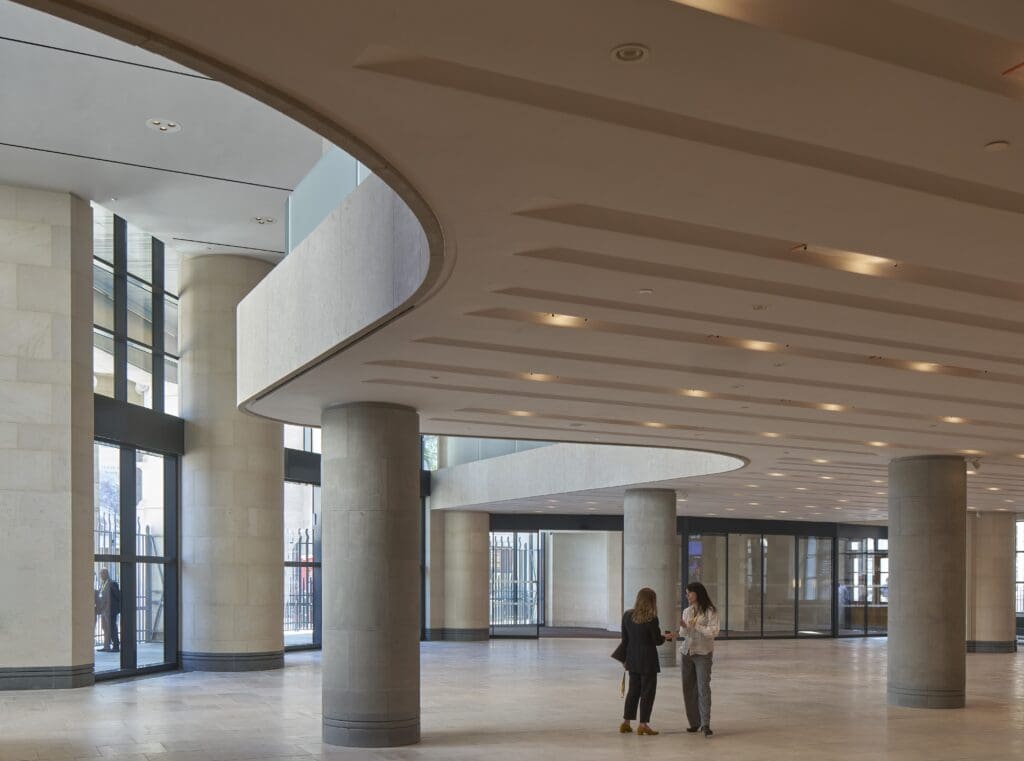
The avant-garde inevitably pops up. Mud Sun, a specially commissioned work by living Bristol-born sculptor Sir Richard Long, made in situ from the mud of the River Avon, lowers at the top of the Sainsbury Wing stairs,
Materials used throughout the new gallery spaces include grey Florentine limestone (pietra serena), Chamesson limestone from northern Burgundy, slate, oak and black granite. Beautifully polished English oak enhances the floor in in the Sainsbury Wing – dating from the opening of the Wing in 1991. People in Trafalgar Square can now see directly into the Gallery, and the Wing affords views of the 1830s National Gallery building by William Wilkins.
A twelve-metre wide, 16K high resolution screen shows monumental images of great works from the collection.
Our stroll might call for some refreshment. Options are a new coffee bar near the entrance, and on the mezzanine a new restaurant by Giorgio and Plaxy Locatelli, in partnership with hospitality group Searcys. Facing diners at the latter is a 10-metre work Crivelli’s Garden (1990-91) by Paula Rego (1935-2022), the National Gallery’s first Associate Artist. Italian Renaissance painter Carlo Crivelli was her inspiration to create the piece, which was for the Sainsbury Wing Dining Room on the original opening in 1991.
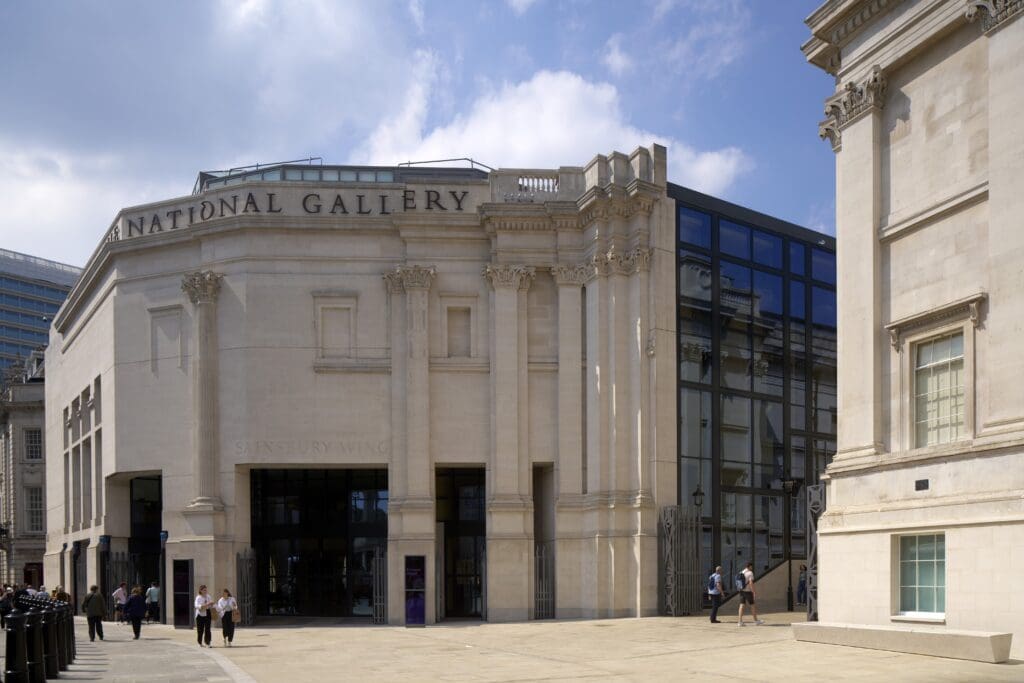
Images:
Apollo and Daphne, 1470-80. By Piero del Pollaiuolo. Oil on wood. National Gallery, London. Wynn Ellis Bequest, 1876.
Rehanging The Martyrdom of Saint Sebastian (completed 1475), Antonio del Pollaiuolo and Piero del Pollaiuolo, in the Sainsbury Wing, Room 56. © The National Gallery, London.
The St Catherine Altarpiece: Reverses of Shutters, 1506. By Lucas Cranach the Elder. Oil on wood. National Gallery, London. Bought 1985.
Wedding Banquet, detail of part III of The Story of Griselda. By the Master of the Story of Griselda (active about 1490-1500).. Oil with some egg tempera on wood. National Gallery, London. Bought 1874.
Portrait of Giovanni(?) Arnolfini and his Wife, 1434. By Jan van Eyck. Oil on wood. National Gallery, London.
Self Portrait in a Straw Hat, 1782. By Elisabeth Louise Vigée Le Brun. oil on canvas. National Gallery, London.
Room 34, The National Gallery. A Distinct Style: British Painting 1740-1800. Part of C C Land: The Wonder of Art. © The National Gallery, London.
Sainsbury Wing’s spacious gallery layout.
Sainsbury Wing foyer looking south. © The National Gallery, London. Photo Edmund Sumner.
National Gallery Sainsbury Wing as seen from Trafalgar Square. © The National Gallery, London. Photo Edmund Sumner.
C C Land: The Wonder of Art at the National Gallery, London, is open now with free entry.





